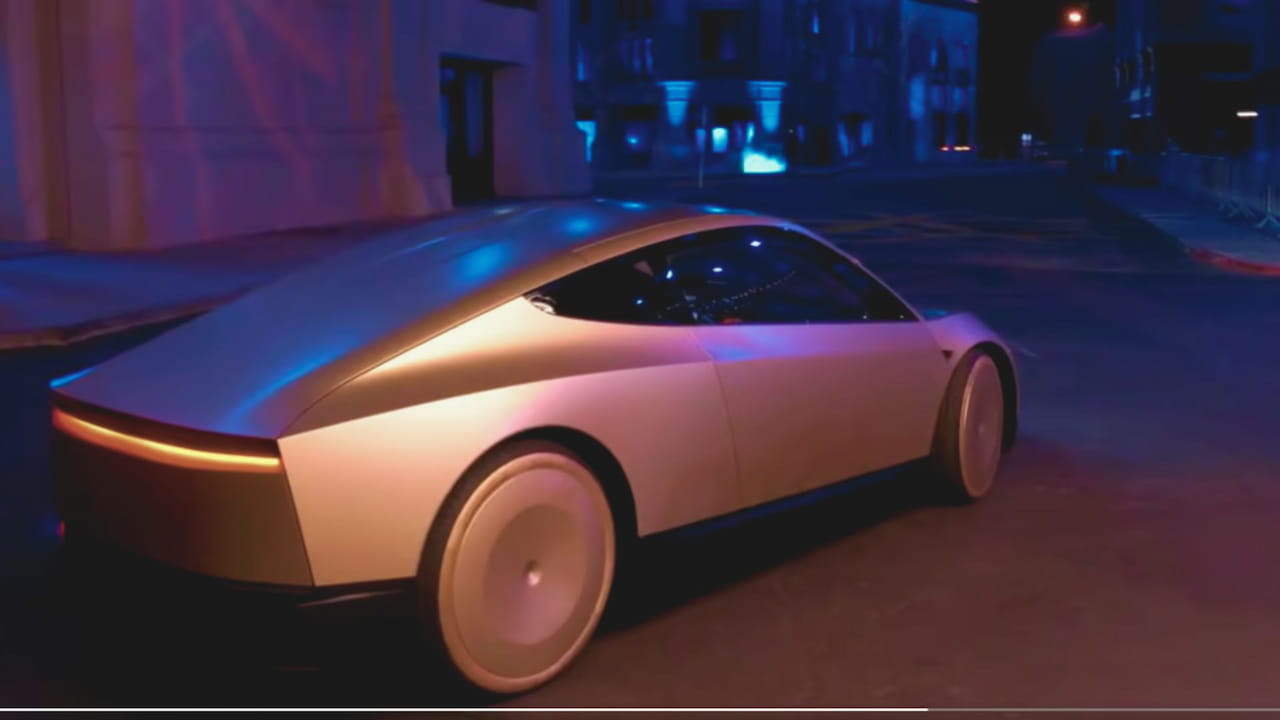Tesla’s Robo-Revolution: Cybercab Unveiling Leaves Investors Wanting More
As a seasoned tech reporter, I’ve seen my fair share of flashy product launches. However, even this seasoned journalist was captivated by Tesla’s recent robotaxi reveal. Picture this: a movie studio lot in California, packed with eager Tesla fans and investors. The air crackled with excitement as 21 sleek Cybercabs rolled out, looking like something straight out of a sci-fi flick.
However, despite all the anticipation, Tesla’s spectacular night left many in disbelief. The company’s stock took a nosedive the next day, dropping nearly 9%. Why? CEO Elon Musk’s presentation had a lot of flair but lacked depth.
Let’s break it down. The Cybercab is Tesla’s bet on the future of transportation. It’s a self-driving taxi with no steering wheel or pedals. The front looks like a Model 3, while the back channels the edgy Cybertruck. Cool, right? But cool doesn’t pay the bills.
Meanwhile, ride-hailing giants Uber and Lyft saw their stocks jump. Turns out, a vague Tesla plan is beneficial news for the competition. These companies are ready to roll with self-driving cars whenever they hit the streets.
Now, let’s talk numbers. Tesla’s been struggling lately. Electric vehicle sales are down, and competition is heating up. They’ve been slashing prices to keep cars moving, but that’s hurting their bottom line. In the first half of 2024, Tesla’s profits took a big hit, dropping over 40% compared to last year.
This is why the Cybercab isn’t just a cool new toy. It’s a lifeline. Tesla needs this project to function efficiently and quickly. But “fast” in the world of self-driving cars is relative. Musk says they’ll have fully self-driving Teslas on the roads in California and Texas next year. That’s a bold claim, especially when you factor in the red tape of government approvals.
However, Tesla is not the sole participant in this competition. Google’s Waymo is already ahead in the U.S. robotaxi race. Tesla’s playing catch-up, but don’t count them out. This is the company that made electric cars cool, after all.
All eyes are now on October 23. Tesla will reveal their third-quarter results on that day. After the letdown of the Cybercab reveal, investors are going to be tough critics. They’re looking for signs that Tesla can turn things around.
Wall Street is expecting Tesla to report revenue of $25.33 billion for the third quarter. That would be an 8.5% increase from last year. But they’re also bracing for a 12.1% drop in earnings per share.
So, what’s the takeaway? Tesla’s Cybercab might be the future of transportation. However, investors are primarily focused on the present. Musk and his team must begin delivering beyond mere promises to sustain the momentum of the Tesla project.
For now, the robotaxi revolution is still more hype than reality. However, given the rapid advancements in technology, this could quickly change. Stay tuned, folks. This ride is just getting started.
